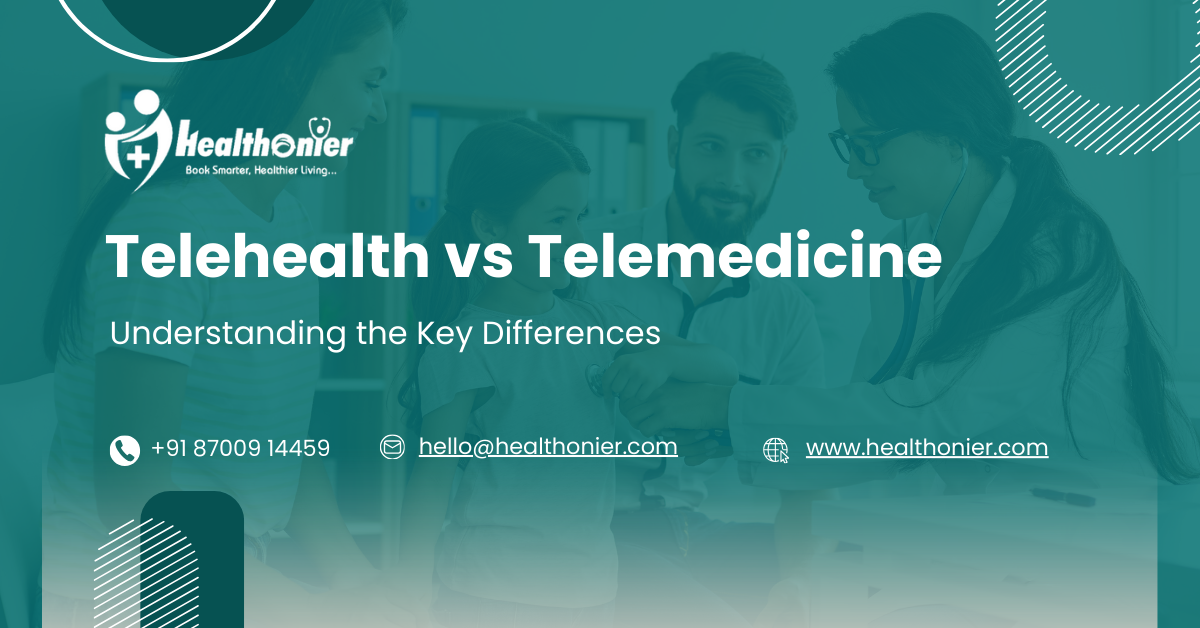In today’s rapidly evolving healthcare landscape, terms like telehealth and telemedicine are frequently used interchangeably, often leading to confusion. However, despite their similarities, these two concepts have distinct characteristics and applications. In this article, we’ll delve into the nuances of telehealth and telemedicine, exploring their differences, services offered, technological aspects, benefits, limitations, use cases, regulatory frameworks, and future trends.
Introduction Telehealth vs Telemedicine
Telehealth and telemedicine both involve the use of technology to deliver healthcare services remotely. While they share the common goal of enhancing access to medical care, they differ in scope and functionality.
Understanding the Difference
Telehealth encompasses a broader spectrum of services, including remote patient monitoring, health education, and non-clinical services. Telemedicine, on the other hand, specifically refers to the remote diagnosis and treatment of patients using telecommunications technology.
Services Offered: Telehealth services may include virtual consultations, remote monitoring of vital signs, medication management, and lifestyle coaching. Telemedicine typically involves real-time consultations with healthcare providers, electronic prescriptions, and diagnostic imaging.
Technology Involved: Both telehealth and telemedicine rely on various technologies such as video conferencing, mobile apps, wearable devices, and electronic health records (EHR). These technologies facilitate seamless communication between patients and healthcare professionals, ensuring efficient delivery of care.
Benefits and Advantages
One of the primary benefits of telehealth and telemedicine is improved access to healthcare, especially for individuals in remote or underserved areas. These platforms also promote patient engagement, convenience, and cost-effectiveness by reducing the need for in-person visits.
Limitations and Challenges
Despite their potential, telehealth and telemedicine face challenges such as connectivity issues, data security concerns, and regulatory barriers. Additionally, some patients may prefer traditional face-to-face interactions with their healthcare providers.
Use Cases
Telehealth and telemedicine have been widely adopted across various specialties, including primary care, mental health, dermatology, and chronic disease management. Use cases range from remote monitoring of chronic conditions to virtual therapy sessions.
Regulations and Compliance
The regulatory landscape surrounding telehealth and telemedicine is complex and varies by jurisdiction. Healthcare providers must adhere to legal and ethical standards, ensuring patient privacy, informed consent, and licensure requirements.
Future Trends
As technology continues to advance, telehealth and telemedicine are poised to play an increasingly integral role in healthcare delivery. Emerging trends include the integration of artificial intelligence, virtual reality, and predictive analytics into telehealth platforms.
In conclusion, while telehealth and telemedicine share common objectives, they serve distinct purposes within the healthcare ecosystem. By leveraging technology to overcome geographical barriers and improve access to care, both approaches have the potential to revolutionize the delivery of medical services.
FAQs (Frequently Asked Questions)
- Are telehealth and telemedicine the same thing?
No, although they are often used interchangeably, telehealth encompasses a broader range of services than telemedicine.
- What are some examples of telehealth services?
Telehealth services may include virtual consultations, remote patient monitoring, and health education programs.
- How do telehealth and telemedicine benefit patients?
These platforms improve access to healthcare, enhance convenience, and facilitate better management of chronic conditions.
- Are there any privacy concerns associated with telehealth and telemedicine?
Yes, patient privacy and data security are significant considerations in the adoption of telehealth technologies.
- What does the future hold for telehealth and telemedicine?
The future of telehealth and telemedicine looks promising, with advancements in technology and evolving regulatory frameworks driving innovation and expansion.


